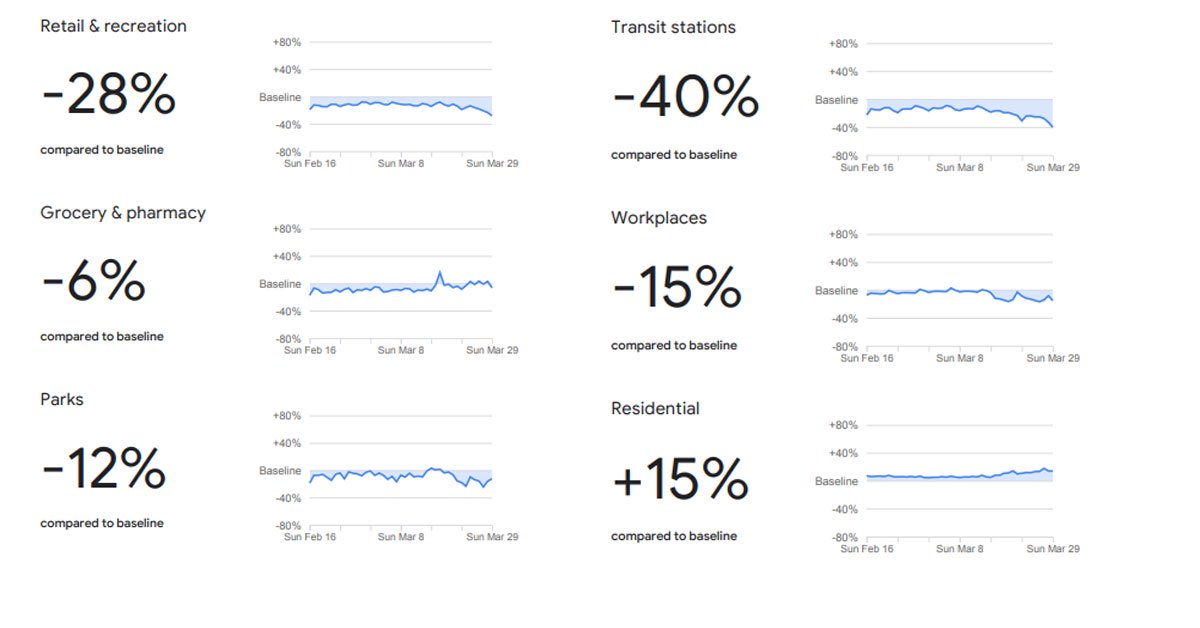The scary thing about technology is that you don’t know what it’s capable of.
One day we might be the ones controlling it, but the next, the world might be overrun by artificial intelligence.
For now, though, we’re just being threatened by a highly contagious virus all over the world and technology is helping us fight it:
Google Has a System to Determine If We Are Staying at Home Or Not During CB Period
Google has recently launched the COVID-19 Community Mobility Report which allows public health officials to keep track of how respective communities move around during the coronavirus outbreak.

It’s a little bit creepy if you think about it but it provides the authorities with invaluable insight on movement patterns.
According to Asiaone, each report is broken down by country with data available up until 29 March 2020.
The reports look at six key locations in any territory or country:
- Retail and recreation (which includes your restaurants and shopping malls)
- Grocery and pharmacy
- Transit stations
- Workplaces
Google then compares the current footfall with its baseline, which is the median value according to its corresponding day of the weak.
This just means that the data has been adjusted to take into account activities on weekdays vs weekends between 3 January to 6 February 2020, before the coronavirus outbreak.
How Did Google Assess The Data?
Basically, Google’s human traffic information is attained from users who switched on the Location History in their settings.
Kind of like how Google Maps determine whether there’s a traffic jam on a road.
This applies to mobile devices with Google Accounts, and it also applies to Google Maps on your phone too.
Lest you’re unaware, Singapore has a mobile penetration rate of 154% as of May 2019, so it isn’t surprising how much data Google has.
The mobile penetration rate indicates that each person most like has more than 1 device around them at any given time.



Thus far, transit stations and retail and recreation have seen the largest drops in footfall, which is what the authorities want.

The good news is that more people seem to be staying at home. Pretty sure that’s going to increase soon.


However, there wasn’t a significant drop observed at Parks or grocery and pharmacy stores (thanks panic buyers).
The United States Saw More Changes
While there certainly have been many changes in movement on our sunny island, the United States reportedly saw even more changes where there was a 47% fall in retail and recreation footfall and a 51% drop in transit stations.
In Singapore, the circuit breaker measures have been implemented in order to prevent further spread of the virus and to encourage everyone to stay home.
If everyone does our part to heed the advice during this period, hopefully, the coronavirus outbreak in Singapore will get better.
In the meantime, stay safe and stay at home.



